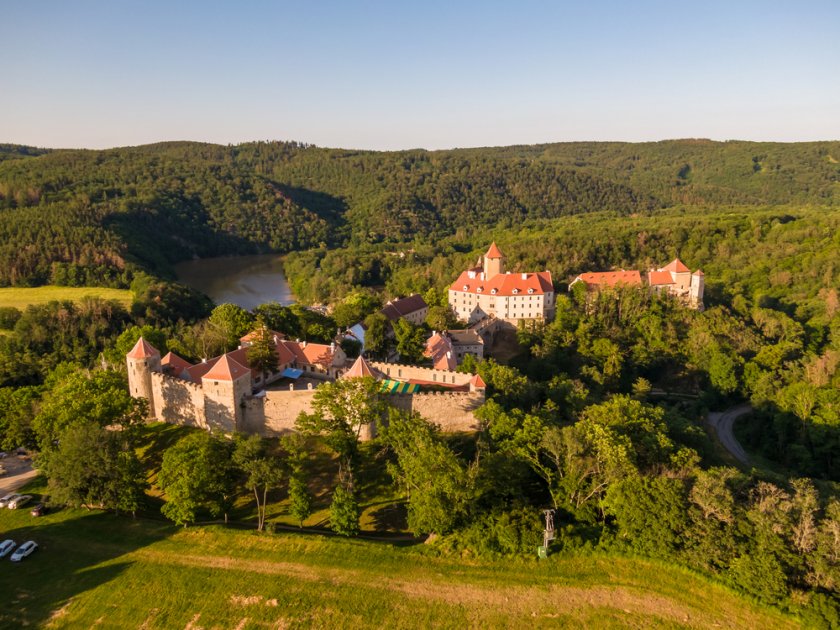Veveří castle
The Veveří castle complex was built over eight centuries and is currently one of the largest castle complexes in the Czech Republic. It was originally a smaller hunting lodge or court for Moravian margraves, and sources mention it for the first time in connection with the year 1213.
Information for visitors
Interesting facts Veveří castle
The castle was given the appearance of Veveří only during the reign of King Přemysl Otakar II. about shortly after the middle of the 13th century. In addition to serving as the site of the royal oversight of the settlement, the walls of the Veveří also served as a prison for prominent political opponents and executions took place there.
Veveří Castle acquired its almost present form shortly after the middle of the 14th century during the reign of Jan Jindřich, a Moravian margrave and younger brother of Charles IV.
Veveří Castle served as a support for the royal Catholic Church during the Hussite wars, but after their end it was pledged by aristocratic families and only in 1536 it passed into the hands of the lords of Ludanice, after whom the castle owners changed relatively quickly, except perhaps the Counts of Sinzendorf. , to which Veveří belonged for almost the entire 18th century.
The castle underwent a major reconstruction at the beginning of the 17th century. During 1645, only Pernštejn and Veveří are mentioned as castles that the Swedes resisted during the siege of Brno. Under the ownership of the mentioned Sinzendorfs, Veveří Castle was transformed into the economic center of the manor and the old palaces were structurally adapted for living in an almost chateau style.
The surroundings of the castle and the southern slope of the promontory were renovated under Princess Ypsilanti after 1870, with the establishment of two greenhouses and a large park. Arnold De Forest, the last owner of the Veveří, a noble family, sold the castle to the Czechoslovak state in 1925.
During the Second World War, Veveří Castle served the needs of SS units and after the war it was briefly opened to the public, until it was relatively inappropriately adapted for the operation of the Forestry School, boarding school and racing school of work in the 1950s. In 1972, the reconstruction into an international congress center began, but only the first stage was implemented from the original plan. Fortunately, it was only about concrete grouting and static security, however, even this intervention damaged the artistic value of the castle. The castle was then abandoned in desperation.
From the end of the 20th century, the systematic restoration of the castle began, and currently the Veveří is open to visitors.
Author: Andrea Štyndlová

